Rocky Mountain Altitude 770 MSL Rally Edition - Review
REVIEWED
Altitude 770 MSL
RALLY EDITION
RALLY EDITION
WORDS Mike Levy
PHOTOS Colin Meagher
Rocky Mountain has earned a reputation for creating solid bikes that can stand the test of time under riders who go harder than the average Joe. That stature has only increased in recent years as the B.C. based company has begun to release models that, while based on existing frames in their lineup, are kitted out with a spec more akin to the burly riding in Rocky's backyard, which is the North Shore, Squamish, and the Whistler area. There are five standard Altitude models to choose from, and then there is the carbon fiber, 150mm travel Rally Edition that's tested here, with Rocky adding a wider handlebar, single ring and chain guide, burlier wheels that are shod with higher volume tires, and a 160mm travel fork with an extra 10mm over what's found on the tamer models. FOX's new Float X shock has also been put into use rather than an inline option, and a set of four piston Avid X0 Trail brakes replace that two piston stoppers that are spec'd across the board on the standard versions. If all that didn't make it clear enough, this $5,599.99 USD bike is intended to go pretty much anywhere that you want to point it, so we did exactly that by aiming it down some hairy sections of trail in Sedona, Arizona, to find out if Rocky's approach of muscling up their standard Altitude makes sense.
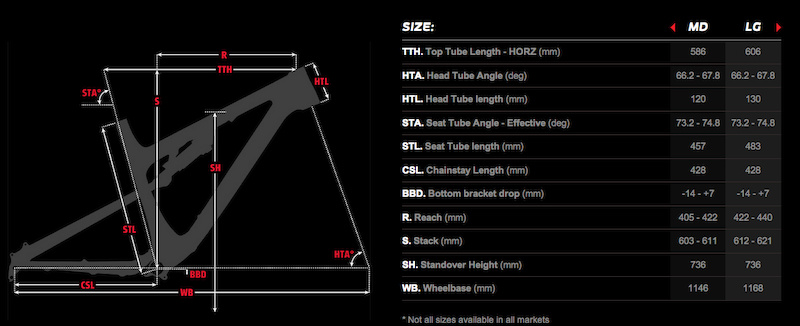
Altitude 770 MSL Rally Details
• Intended use: all-mountain/enduro
• Wheel size: 27.5"
• Rear wheel travel: 150mm
• Carbon front triangle, aluminum rear
• Press Fit bottom bracket
• Internal dropper post routing
• ISCG 05 chain guide tabs
• Weight: 29.5lbs (w/o pedals)
• MSRP: $5,599 USD
Frame Details
The Altitude's front triangle starts life as a bunch of unidirectional pieces of carbon that are placed over a foam mandrel rather than the more common method of using a rubber bladder that is inflated within a mold. Rocky says that this creates a very smooth inner surface to the frame, something they refer to as ‘Smoothwall’ construction. Why does it matter if the inside of the frame, an area you'll never be able to see, is smooth? Basically, the smoother inner walls mean that there has been much more uniform compaction forces applied during the molding process, which in turn adds up to less voids in the carbon fiber. Voids are areas where the carbon hasn't come together properly, and they can create weak spots in the frame. Now, it isn't like the competition's frames are filled with these voids, or even that no other company offers frames built using the same principles, but it's certainly worth noting that the carbon Altitudes are manufactured using this clever process.
The carbon fiber ends where the Rally's rear end begins, though, with Rocky choosing to go with aluminum for the bike's chain and seat stays. Rocky Mountain did tell us that going with a carbon rear end would have bumped the bike's price up beyond their target number, but we suspect that the aluminum stays also better suit the 150mm travel bike's rowdy intentions. Chain stays in particular are subjected to quite a bit of abuse from rocks being flung up or riders being flung off when things go south, and the Rally is in line with many other carbon bikes on the market that sport aluminum rear ends. Having said that, the Rocky Mountain - Urge bp Rally Team will be contesting the EWS series on bikes with carbon fiber from front to back.
Like a lot of companies these days, Rocky has decided to route nearly every cable internally, a strategy that can sometimes make it a real nightmare when the time comes to swap a line and you don't have the proper technique down pat. Fortunately for both shop and home mechanics, the frame makes use of internal guides for the smaller entry and exit holes, and those that depart the frame underneath the bottom bracket shell can be easily fed through the large opening. The bike's rear brake hose is kept on the outside, running along the down tube and then on to the chain stay, so that one doesn't have to perform a brake bleed if you need to swap it out for any reason. Rocky has also made concessions for an internally routed dropper post like the Reverb Stealth that it comes stock with, and the post's line runs inside of the down tube, out the port underneath the bottom bracket, and makes a short loop before re-entering the frame at the base of the seat tube. Despite not coming equipped with a front derailleur, there is quite a tangle of cables found in front of the handlebar. Yes, careful trimming to figure out the perfect lengths is going to help, but the bike's Reverb line and extra FOX CTD remote cable (that runs within the top tube, exiting just in front of the shock) definitely make for a bit of a rat's nest up front, which is a shame because the rest of the bike looks extremely clean.
Somewhat bewildering, there are still a handful of mid-travel bikes that haven't been fitted with with chain guide tabs. Rocky Mountain is a lot smarter than that, though, and the bike's carbon fiber front triangle has a set of ISCG 05 chain guide tabs for the stock e*thirteen TRS+ guide to be bolted to. The Rally Edition is most certainly a bike that deserves a guide, with the standard Altitude models likely more your cup of tea if you're looking for a wider gear range, but Rocky does give you the option of installing a front derailleur via the direct mount on the chain stay if you're looking to do so. Like pretty much every bike in the same class, you'll also find that the Rally Edition sports a tapered head tube and a 12 x 142mm thru-axle out back.

Ride - 9 There was a time, not too many years ago, when bikes would offer a rider so many suspension and geometry adjustments that you'd begin to wonder if you were doing more harm than good by moving things around. That trend has seemed to go the way of 3" wide tires and 24" wide handlebars over the last few years, but Rocky Mountain believes that the rider should still be able to tune how their bike handles beyond turning dials on their shock. Enter their Ride - 9 forward shock mounting that allows rider to pick from nine different geometry and suspension settings by way of dual insert, offset shock hardware that tunes both the suspension ramp up and the geometry, allowing for 2° of head angle and 20mm of bottom bracket height alteration.
The setup allows a rider to roughly preserve the bike's geometry while still letting them alter the suspension rate, or vice versa. Like your head angle and bottom bracket height, but looking for more ramp-up at the end of the travel? Simply orientate the insert to the forward position and you're set. No, it isn't as simple as just having another shock mounting hole, but it does allow for far more possibilities.
The setup allows a rider to roughly preserve the bike's geometry while still letting them alter the suspension rate, or vice versa. Like your head angle and bottom bracket height, but looking for more ramp-up at the end of the travel? Simply orientate the insert to the forward position and you're set. No, it isn't as simple as just having another shock mounting hole, but it does allow for far more possibilities.

The Rally's Suspension Explained
The Altitude's somewhat traditional looking frame design goes a long way to having one assume that the bike features just another single pivot, linkage activate suspension layout that should only require a sentence or two to summarize. That isn't the case, though, as Rocky Mountain employs their four-bar, SmoothLink design across their entire full-suspension range, bar the Flatline downhill bike, and it's what you'll find on the back of the Altitude Rally Edition as well. The most important detail to note about the design is the position of the rear axle, with it not only being positioned on the seat stays rather than the chain stays, but also being located 10mm below the dropout pivot. Compare the axle's position relative to this pivot against a more traditional four-bar design that sees the same pivot placed well below the axle and you'll spot the difference. But how big of a deal is it, you ask? After all, what's a handful of millimeters in the grand scheme of things? A whole hell of a lot, as it turns out, because it all comes down to the forces being applied on the suspension by the drivetrain. Rocky Mountain says that the
SmoothLink design ensures that, if one were to draw a straight line through the main pivot to the rear pivot, they would find that it sits above the rear axle throughout the bike's travel. "The lower linkage member is virtually parallel to the Average Chain Torque Line (ACTL ), at all points of travel, says Rocky Mountain. ''This is the key to bob-free suspension, since the two are parallel, the chain tension cannot act on the suspension.'' Basically, the claim is that they have been able to neutralize chain tension so that it has little to no effect on the bike's suspension, thereby allowing the rear end to remain active and supple when on the gas. The Altitude's somewhat traditional looking frame design goes a long way to having one assume that the bike features just another single pivot, linkage activate suspension layout that should only require a sentence or two to summarize. That isn't the case, though, as Rocky Mountain employs their four-bar, SmoothLink design across their entire full-suspension range, bar the Flatline downhill bike, and it's what you'll find on the back of the Altitude Rally Edition as well. The most important detail to note about the design is the position of the rear axle, with it not only being positioned on the seat stays rather than the chain stays, but also being located 10mm below the dropout pivot. Compare the axle's position relative to this pivot against a more traditional four-bar design that sees the same pivot placed well below the axle and you'll spot the difference. But how big of a deal is it, you ask? After all, what's a handful of millimeters in the grand scheme of things? A whole hell of a lot, as it turns out, because it all comes down to the forces being applied on the suspension by the drivetrain. Rocky Mountain says that the
ABC Pivots For many riders who owned full-suspension bikes more than ten or fifteen years ago, the thought of going back to using bushings at the pivots will likely sound about as appealing as giving up their suspension fork for a suspension stem. Rocky Mountain says that things have moved on a long way since those days, with improved materials and better tolerances meaning that revisiting bushings at some pivot locations can be a real option. Their angular bushing concept (ABC) pivots were first used on the 2011 Element series, and they've since been put to use throughout their range after proving themselves to be reliable. Made up of two angled contact surface polymer bushings and tapered aluminum hardware, the ABC pivots are said to provide a much more rigid interface than what a sealed bearing could ever dream of, and Rocky also claims that they save 120 grams per bike over a standard setup. ABC pivots can be found at the dropout and both rocker arm pivots, but traditional bearings are still used at the main pivot location due to packaging issues. Rocky Mountain told us that they're still working on utilizing an ABC pivot setup for this location, so we wouldn't be surprised to see something from them in the future.
| ||||||||||||||||||||||||||||||||||||||||||||||||||||||||||||||||||||||||
Riding the
Altitude 770
Altitude 770
Climbing / acceleration:
You know those walls that you get halfway up and then simply try and find a safe place to put a foot down so you don't tumble straight back to where you started? Somewhat unexpectedly, those are where the Rally makes a lot of other 150mm travel bikes look at bit stupid for even trying. As long as you know where to steer and stay seated to take advantage of the bike's steep seat tube angle, it will manage to trundle over and around all sorts of things that should stop it in its wide tire tracks, and it is those mega wide, mega sticky Continental tires and very active rear suspension that play big roles in its abilities. Is this how trials motorbike riders feel? Because if it is, they know what's up and how to get there. Steering in those same situations is on par with how you'd expect a 150mm travel bike to handle; that is, slow and requiring its rider to really tell it where to go, but that's not a knock against the bike - you won't be disappointed if you're climbing to descend. That is exactly what you do when aboard a 150mm travel bike that's been fitted with a chain guide and top notch suspension, after all. While we could go on and on about its adeptness at crawling up the worst of the worst, its potential in such situations is a bit limited by Rocky's choice of gearing on the bike: a 34 tooth ring and a 11 - 36 spread cassette. Now, before you go on about the whole "back in my day we only had 28 tooth big cogs and thumb shifters" we should mention that we don't care how tough you think you are, and that you were likely running the easiest gear available at that time. Times have changed, and now we have the option of single ring gearing that will allow weekend riders to get 30lb bikes to the top of the hill with plenty of gas to spare for the descent, so we'd like to see exactly that in order for everyday riders to take full advantage of the Rally's impressive wall climbing abilities.
When we first sampled a near production Altitude 750 on Whistler's local trails we reported back that the bike was ''a sporty feeling rig on the climbs,'' and that it gave us a ''very firm and efficient impression during the climb up.'' So, with memories of that first brief introduction to Rocky's 150mm travel platform in the back of our minds, we hit Sedona's challenging climbs expecting much of the same. Only, that's not what we got. The acclaim that we heaped on the Rally Edition when talking about slow speed, technical ascents is offset by a bit of a flaccid personality on any climb where the focus switches from handling skill to all out fitness, and the bike that impressed us so much on tricky climbs felt as if it had about as much get-up-and-go as a rickshaw with a flat tire delivering Honey Boo Boo and her mom to Burger King for a few Double Stackers. It was quickly obvious as to why Rocky went with a handlebar mounted remote to control the Float X's CTD function, because, as much as we despise added remotes and cables, we found ourselves reaching for that button as soon as single track climbs turned to smoother double track climbs or gravel access roads. We began to refer to the CTD remote as our "go button" as it really woke the bike up on non-technical climbs, as does the new and stiffer 'Climb' mode on the 2014 FOX Float CTD fork, but its 2.4" wide Continental Mountain King tires still did their best to keep us from feeling too sporty.
 | The bike that impressed so much on tricky climbs felt as if it had about as much get-up-and-go as a rickshaw with a flat tire delivering Honey Boo Boo and her mom to Burger King for a few Double Stackers. |
Not the best all 'rounder on the ups, right? No, but there are a few things Rally owners can do in order to light a fire under the bike's ass. Number one would be to adjust its gearing to better suit their needs, if required, with a 32 tooth or off-set 30 tooth chainring likely opening up the bike's slow speed climbing abilities for mortal riders out there who only get out one or two days a week. To Rocky's credit, they chose not to go with a SRAM X01 setup as it would have added to the Rally's MSRP, and they also point out the bike's intentions as a race machine, saying that "the tall gearing is dedicated to racing. Versatility was never an objective of the Rally Edition.'' So there you have it. Change it up if need be. Our other suggestion would be to swap out the Continental monster truck tires for something that rolls a bit quicker, but only if you access most of your descents by way of boring gravel road climbs - the tires bless the Rally with the climbing ability of a Unimog, but also curse it with a Unimog's lack of efficiency and speed, so leave them be if your local climbs are more challenging than the last level of Candy Crush Saga.
Downhill / technical riding:
While we raved on about the bike's supple suspension and high volume Continental tires providing the most traction on climbs that we've seen this side of a gecko, it also has a very positive effect when it comes time to get after it on the downhills, just as one might expect. This was most evident when crossing loose over hard packed ground, terrain that had other bikes feeling as if they were about to slide past the point of no return and deposit us on our ass. You can insert all sorts of cliched terms in right here: glued to the ground, traction in spades, loads of grip, as all of them adequately describe how the Rally performed when we thought traction was in doubt. The bike also manages to eliminate small chatter incredibly well, a factor that clearly comes into play when talking about its ability to track so well. We've now experienced the Float X shock on a handful of different bikes, with each and every encounter seeing us come away impressed with what FOX has been able to do with their latest air sprung damper. Controlled is a great way to describe it, because the shock is seemingly able to take in and dissipate everything from the smallest of ripples to the largest of miscalculated flat landings, and all with a minimum of dials and knobs to fiddle with.
 | That sort of performance isn't solely down to the shock, though, as the engineers behind the bike have managed to create a suspension layout that, when paired with the Float X, is able to work miracles when it looks like a miracle is the only thing that will save you on a downhill section gone wrong. |
The front of the bike impressed us equally, with FOX doing good things within their 2014 Float CTD forks. The bottom line is that FOX has turned things around, and the 160mm travel offering on the front of the Rally Edition is ready for anything. We left it in the wide open 'Descend' setting for the large majority of the downhills, only resorting to the stiffer 'Trail' position when things really mellowed out, and both modes felt controlled and well damped - there is no excess diving here when the front is weighted. The rougher the trail, the better the Rally Edition feels, and there weren't any moments when we thought that the bike was coming up a bit short in the suspension department when talking about truly chunky ground under the bike. It's when things tamed down that we got the distinct impression of the bike's travel being more forgiving than our sag figures would otherwise suggest, and we don't mean forgiving in a ''I forgive you for the tasteless Honey Boo Boo joke'' good kind of way either. With the Float X left at full open, the bike just doesn't have the life in it that you see in some other 150mm travel options, very much like it would rather go through whatever is in front of it than pop over it. That's just fine in some situations, and especially if you live in a place where the local trail builders aim to have you signing the holy cross across your chest before you drop in. It is other, less demanding trails that had us re-visiting that "go button" in order to engage the shock's 'Trail' mode, with it taking the Rally Edition from Grave Digger doing donuts in a parking lot to a rally car slicing and dicing smooth corners.
Despite the monster truck approach that we sometimes felt was best to take, the Altitude handled like we'd been riding it for the last decade and knew exactly what to expect. It's sort of like that old friend that you know well enough to joke around with, but you also know what not to say... except the Rally isn't an old friend; we literally had just met and it's handling simply felt intuitive and spot-on. Corners that closed up and got progressively tighter don't require a stab of the rear brake to align the bike properly, not something we can say of many of the other bike's we've ridden on the same trail, and the Rally was happy to dive in hard when told to. It also never felt like we were reaching the limits of the bike's stability when the speeds rose, with a very planted and balanced chassis that fed our ego on fast downhills - some trail bikes can tend to feel short and skittery as designers chase shorter and more nimble packages, but the Rocky manages to strike a good balance between all of the traits that make up a proper handling bike. When we reviewed the Altitude 790 MSL, the less aggressive little brother to the Rally models, we noted some flex from the bike's rear end, but that lateral give was never noticed on the 770 MSL. Remember the Rally features an aluminum rear end, whereas the 790 MSL sports a carbon fiber tail, a difference that clearly has some implications on the trail.
Technical Report
• FOX suspension: Good - you want active? You got it. The Float X and 34 Float CTD fork slide with as little friction as a Crazy Carpet with a coating of pam on its underside that's been sent down a bobsled run. In case you were wondering, that means that we didn't feel even the slightest bit of friction. Bad - the shock's rebound dial is located at the forward end rather than at the end of the stanchion, making it really freaking hard to reach when we wanted to make an adjustment. We resorted to using the end of a long 2mm hex key to push it, and although we didn't need to tweak it that often once we had our spring rate set, it was a bit annoying regardless.
• ABC pivots: Good - these bushing pivots are the real deal. Not only were the ones on our Rally test bike quiet and trouble free, the same setup on our Element 999 RSL test platform has been the same for roughly ten times the miles. We admit to being a bit hesitant at first, but there's now no doubt in our minds that the ABC system will stand the test of time. Bad - we removed the bike's FOX Float X CTD shock and took the ABC pivot in the rocker link apart to get a better understanding of what's going on in there, and quickly learned that there are quite a few pieces to the design, because most of them ended up on the floor a few times over while we tried to reassemble everything. The lesson here is that you shouldn't muck around with them.
• Avid XO Trail brakes: Good - we've always been fans of Avid's lever shape and awesome modulation, and their adjustments make dialling them in to our liking a cinch. More than enough power for any rider, as well. Bad - more inconsistent lever feel from Avid, with the factory bleed not really up to par. It's an easy fix for those who know how, or a quick visit to the shop for those that don't, but a rider who just dropped $5,599 USD for the bike won't be happy with either option.
• Stan's ZTR Flow EX rims and SRAM X9 hubs: Good - a smartly built wheelset that is reasonably light given their intentions, doesn't cause a stroke when you go to set them up tubeless, and proved to be as reliable as always. This was also our first go on SRAM's new X9 hubs. Troubles? Not a one.
• RockShox Reverb Stealth: Good - put it where you want it, be it 5mm from fully extended or anywhere in its stroke. We've had one or two in our test fleet that we've needed to bleed over the last few months (you'll get to read about those in future bike reviews), but the Rally's Reverb was flawless. Bad - we sure would like to see the post's remote placed under the handlebar on the left side, a setup that is the most comfortable for us, rather than on top and integrated with the front brake perch. A small detail, but something we'd change if we bought the Rally for ourselves.
• The drivetrain: Good - we already harped on about the bike's tall-ish gearing, but it didn't give us a hint of trouble as far as functionality goes. The e*thirteen TRS+ chain guide and clutch equipped derailleur had the bike quiet enough for us to roll up on a Sedona vortex hunter before he knew we were even there (the 'shrooms in his system probably helped), and we didn't drop a single chain. Actually, we can't remember the last time we dropped a chain when using an e*thirteen guide.
Pinkbike's take:
 | The Rally is certainly focused more on taming truly rough terrain than being the best bike to take on your local "flow trail", and Rocky Mountain doesn't make any excuses for this approach, saying that ''straight out of the box, our Altitude Rally Edition bikes are ready for any enduro start-gate.'' Or maybe just the local shredder who gets his shits and giggles from riding a mid-travel bike on big-travel terrain, even if he's never going to toe the start line of an enduro race? For sure. Truth be told, there are other bikes with the same amount of travel that perform better when the trail doesn't require knee pads or has you questioning your choice of an open-face helmet, meaning that the 770 MSL Rally Edition isn't the all 'rounder that the average rider would benefit from. That's not a slight against Rocky Mountain, though, as their standard Altitude lineup fills those needs, thereby allowing them to assemble 770 MSL Rally Edition with less concern for the average rider's needs. We like that because it has given them the chance to create a bike that is a bit of a specialists at riding hairy terrain at speed, and if that sounds like a perfect Sunday or Saturday afternoon to you, then you'll likely be a fan of the Rally Edition.- Mike Levy |
www.bikes.com
Author Info:
Must Read This Week
[UPDATED] Final Elite XC Results & Overall Standings from the Mairiporã XC World Cup 2024
41913 views
41913 views
Sign Up for the Pinkbike Newsletter - All the Biggest, Most Interesting Stories in your Inbox
PB Newsletter Signup

 The Altitude's clean look, at least from the handlebar back, is due to the bike's internal cable routing that keeps most of the lines out of sight.
The Altitude's clean look, at least from the handlebar back, is due to the bike's internal cable routing that keeps most of the lines out of sight.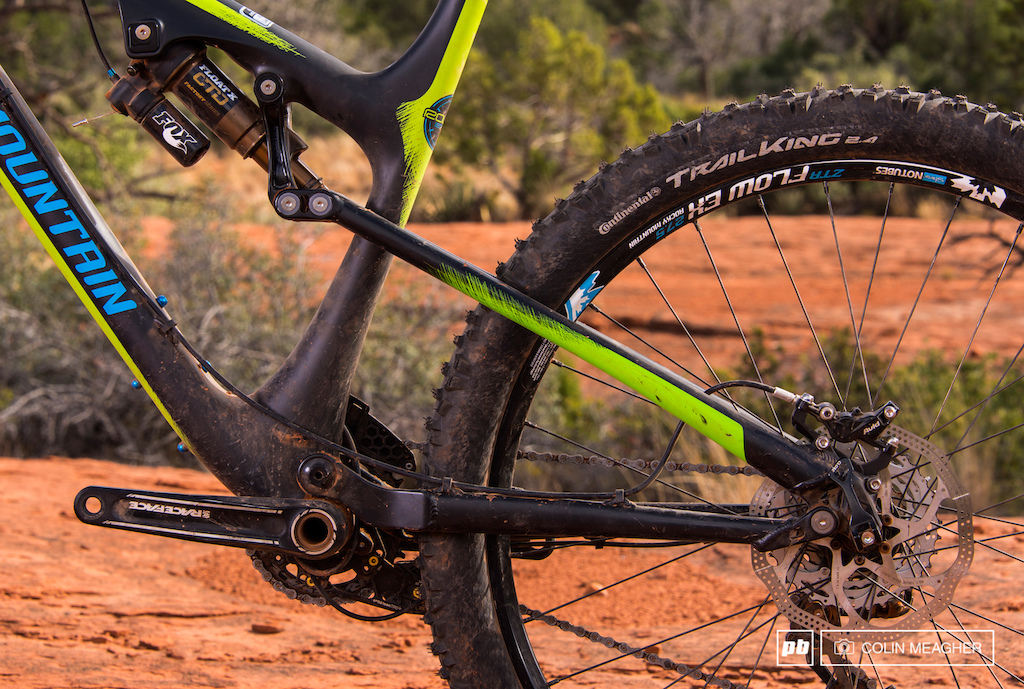

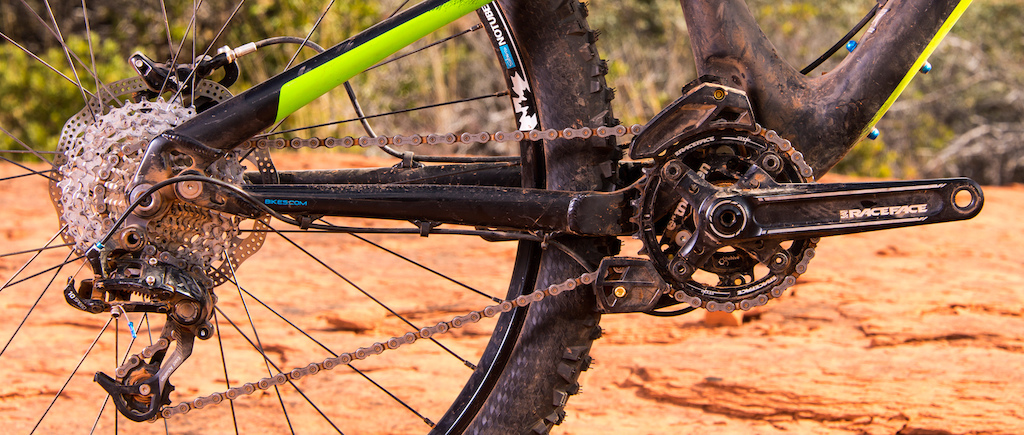

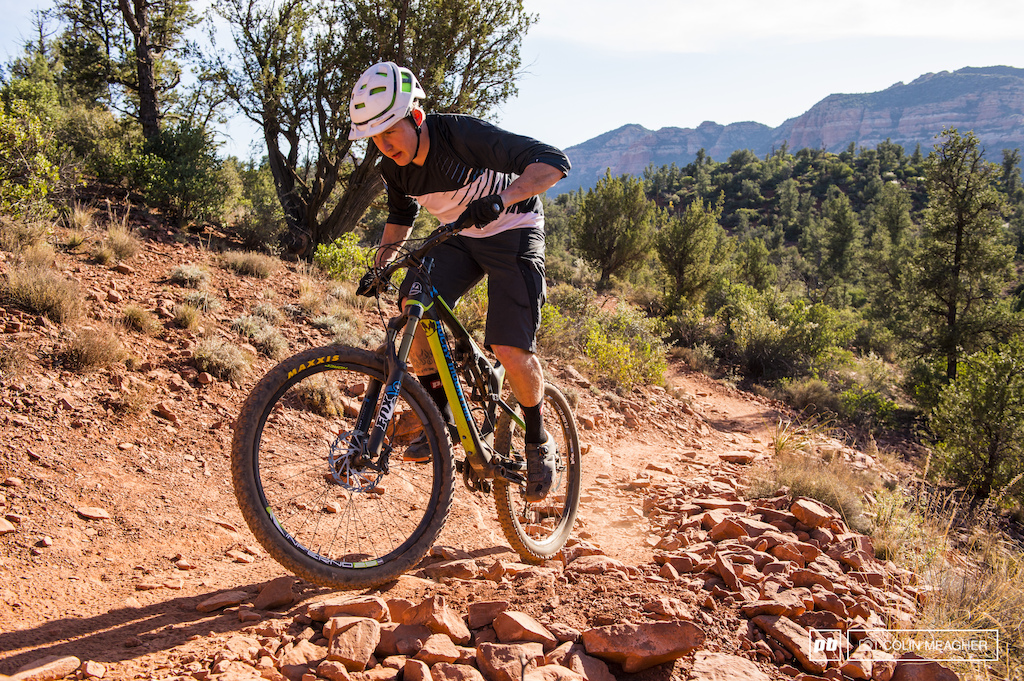
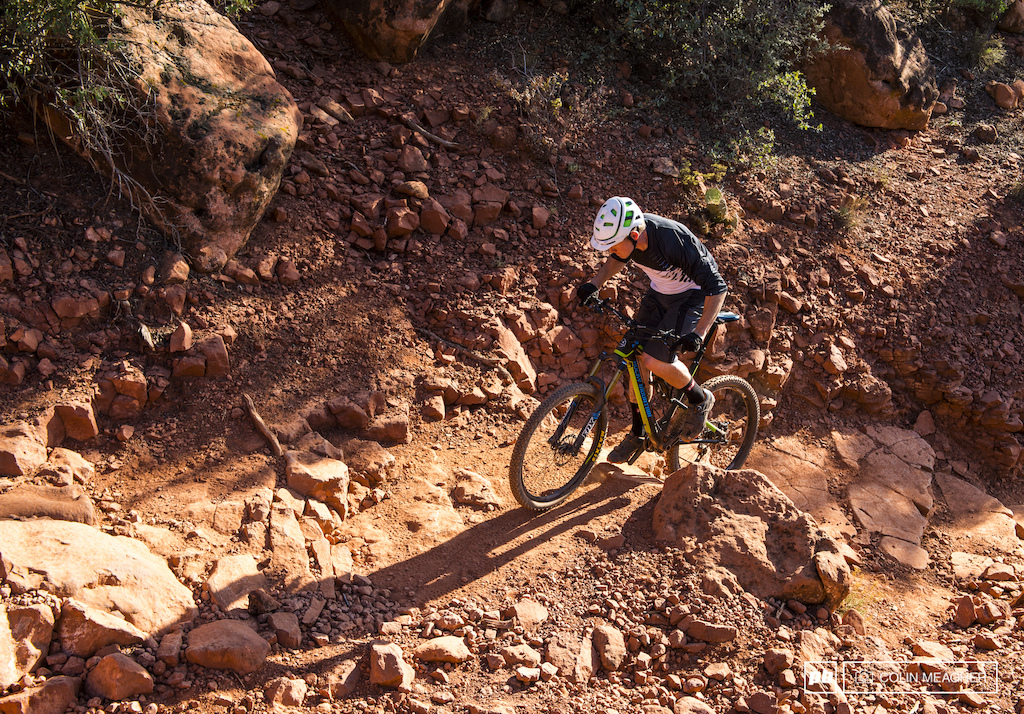
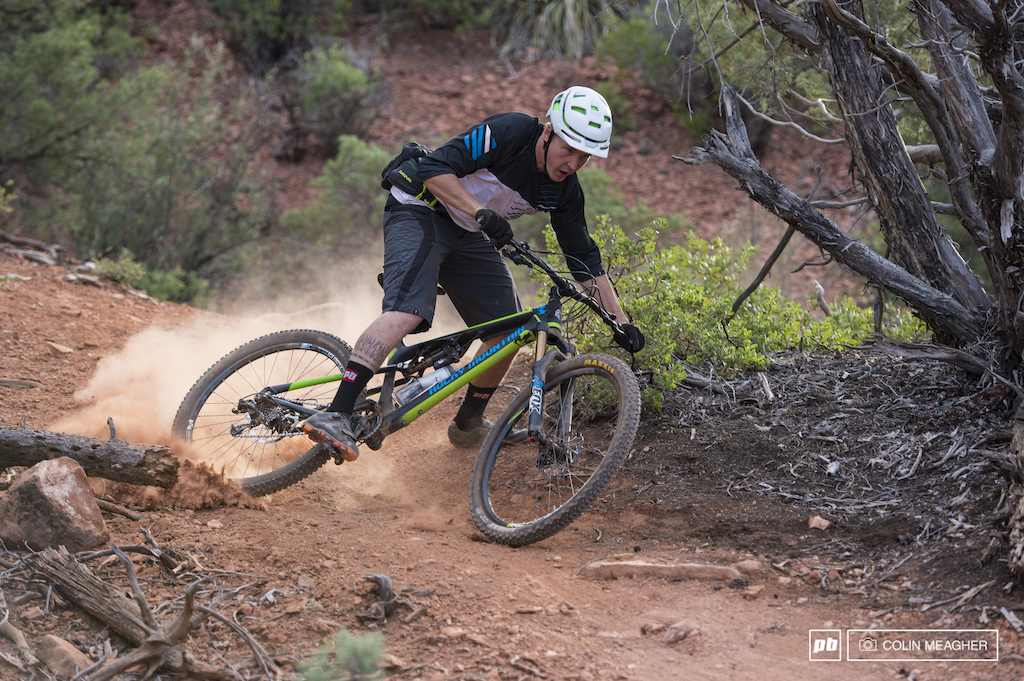



I also see no reason why I'm even replying to this, this Avid/Shimano debate has proven pointless many times before. I'm sorry.
Seriously? I thought we passed by these made up terms and absolute BS marketing back in 1998. It's difficult to believe that people get paid to make this stuff up.
By the way, a single pivot 29er could fall under that description quite easily.
A) That bike would be perfect for me.
B) I really, really, really need to go back to Sedona here soon.
New Zealand next week will give me a better "bike park / Groomed trail" review.
Have has the same issue with the rear maxle coming loose at the end of a run.
replaced tyres with a minion dh on the front and a nevegal on the rear, the contis were awesome grip wise but the sidewalls were easily damaged.
...ofcourse if that pictures are from tires-testing runs, they could be in various combos
" ...the Rally makes a lot of other 150mm travel bikes look at bit stupid for even trying. As long as you know where to steer and stay seated to take advantage of the bike's steep seat tube angle, it will manage to trundle over and around all sorts of things...."
Nice bike though...!
Pinkbike updates at 12:00 AM Pacific. I don't think they're actually typing away on their keyboards at this hour. Especially RC, it's past his bedtime.